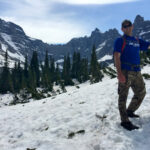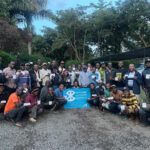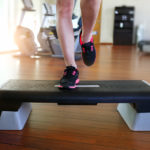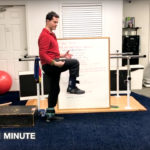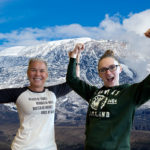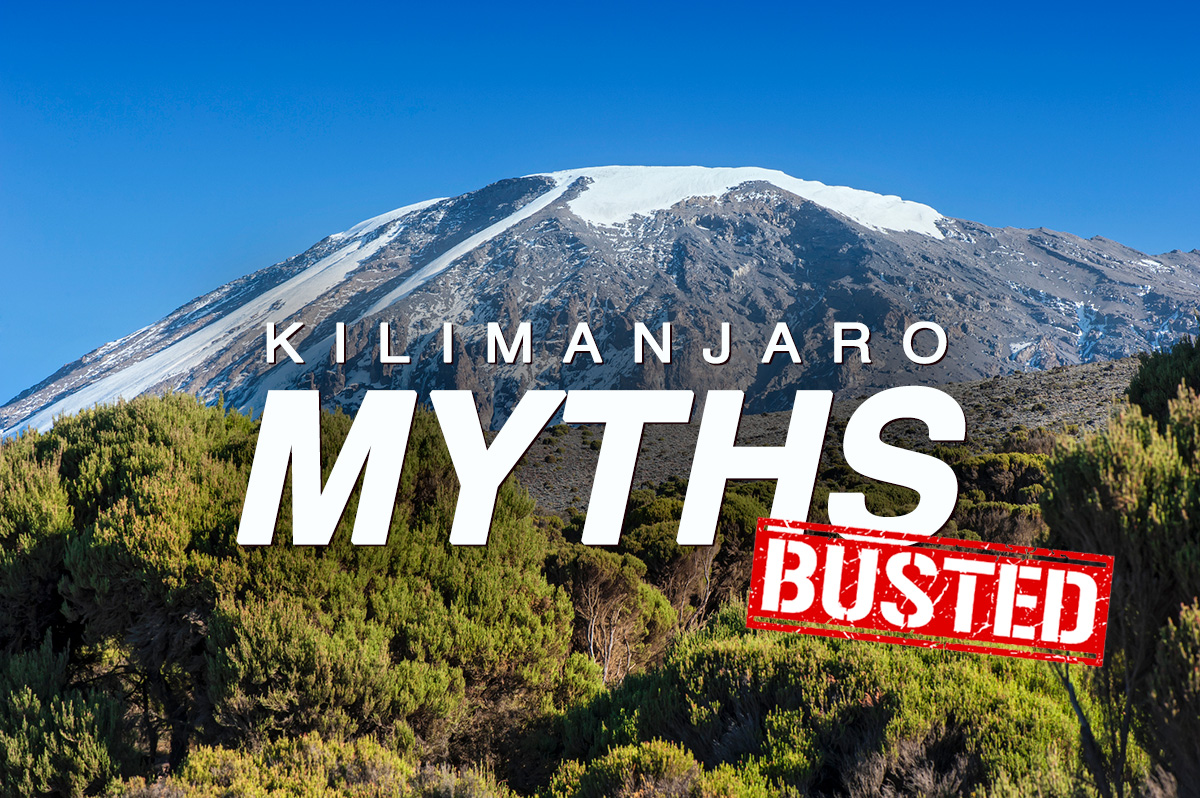
Myths and misconceptions abound on Mt. Kilimanjaro. Some are harmless, while others can have a serious impact on your ability to reach the Roof of Africa.
Let’s look at seven common Kili myths and see why they’re misleading.
Myth: The Climb is Technically Challenging
Because Kili is one of the world’s Seven Summits, a misconception has arisen that you need special gear, training and technical skills to climb. The truth is, Kilimanjaro is no Everest; you don’t need any technical skills or special equipment. Leave the ropes and carabiners at home!
Still, reaching Kili’s peak is no walk in the park. You need to train for the physical challenges of trekking, and you should be prepared for high altitudes, frigid weather, long trekking days and some scrambling at Barranco Wall. Here’s what a typical Kili trek looks like.
 BUSTED!
BUSTED!
Myth: Fitness Will Help You Prepare for Altitude Sickness
High up on Kilimanjaro, you’re going to breath a bit deeper. Low air pressure means the body must work harder to take in the same amount of air–this is true no matter how fit you are.
In fact, age, sex and physical fitness have zero effect on your likelihood of getting altitude sickness. There’s no way to train for it, and there’s no way to predict how it will impact you. The best way to prepare is to know what to expect and how you can mitigate the effects. Learn more about acclimatization and altitude here.
 BUSTED!
BUSTED!
Myth: You Can Summit Quickly
Ready to race to Uhuru Peak in a short, brisk trek? Slow down! It’s easy to trek too fast and overexert yourself, leaving you exhausted and vulnerable to the effects of altitude.
“Pole, pole,” is something you’ll hear often on Kili; it’s Swahili for “slowly, slowly,” a reminder to slow down and walk an easier pace. Some trekkers employ the rest step, others prefer to manage their gait in other ways.
No matter your walking speed, a longer trek (6+ days) is almost always preferable to a faster one. Routes like the Western Approach and Grand Traverse offer ample acclimatization time, ultimately increasing your chances of summit success.
 BUSTED!
BUSTED!
Myth: You Have to Eat Basic Meals
When you’re trekking for hours through Kili’s five climate zones, the last thing you want to do is eat unappetizing, boring meals that are slapped together carelessly. Uninspiring fare on Kili not only lacks nutrition but fails to provide the morale trekkers need to stay motivated on their ascent.
With Thomson, you’ll eat hearty, mountain-gourmet meals for breakfast, lunch and dinner every day of the trek. Thomson chefs design their menus to maximize nutrition and prepare you for the challenges ahead. Check out a sample menu here, and read a food blogger’s review of her meals on Kili here.
 BUSTED!
BUSTED!
Myth: Trekking Kilimanjaro is an Individual Endeavor
Gone are the days of foolhardy solo summit excursions, when gutsy individuals climbed Kilimanjaro with nothing but their mettle and moxie. In the modern world, teamwork is everything. In fact, it’s illegal to trek Kilimanjaro without guides and permits, for good reason.
Climbing Kilimanjaro requires so many resources: food, water, cookstoves, tents, clothing, medical supplies and more. That’s why every Thomson trek is supported by a team of porters that shoulder virtually all of that weight, so you can focus on the trek.
Every Thomson trek is also led by WFR-certified, veteran guides, who know how to respond to any challenging situation you might face on the mountainside.
 BUSTED!
BUSTED!
Myth: The Summit is All that Matters
Some trekkers consider summit success the only important aspect of their journey. They believe the trek itself is merely a means to an end–the end being the Roof of Africa.
While Thomson guests boast a 98% summit success rate, most find a substantial pleasure in the challenges, triumphs and camaraderie of the ascent itself.
Just ask trekker David James, who descended before the summit with his daughter once she began to experience altitude sickness:
“Overall, the ascent was a marvelous experience…We were happy to have seen the mountain up close and personal, but not in the least disappointed not to have summited. We had a wonderful time on our expedition.”
 BUSTED!
BUSTED!
Myth: Hiring Porters is Inherently Unethical
Porters are an essential part of every Kilimanjaro trek. They carry the gear, cook the food and ensure trek logistics run smoothly. Unfortunately, it’s common to see budget trekking outfits treat their porters poorly to cut costs.
Thomson doesn’t. In fact, Thomson sets the “premier standard for ethical treatment of Kilimanjaro Porters,” according to the Kilimanjaro Porters Assistance Project (KPAP). Fairness has always been one of our top priorities.
- Thomson porters are among the highest paid on the mountain
- Thomson porters are paid electronically into individual bank accounts, with fair tip distribution
- Thomson porters receive professional gear, eat three meals a day and adhere to carrying-weight maximums
Learn more about ethical porter treatment on Kilimanjaro.
 BUSTED!
BUSTED!

